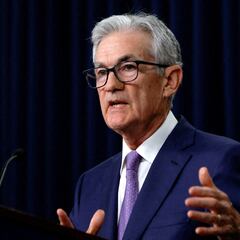30-year mortgage rates finally fall below 6% - how does it affect your loan?
Reducing borrowing costs can make homeownership more accessible and potentially invigorate the housing market, which has been constrained by high rates.


In a significant shift for the U.S. housing market, the average rate on a 30-year mortgage has fallen below 6% according to Zillow, marking a welcome change for prospective homebuyers and homeowners looking to refinance. This drop, influenced by a decline in U.S. Treasury yields and cooling inflation, will have considerable implications for the housing market and individual borrowers.
The decline in mortgage rates is closely tied to the trajectory of the 10-year U.S. Treasury yield, which has been falling due to expectations that the Federal Reserve will cut interest rates this year. This trend has led to a reduction in borrowing costs across the board, including for home loans.
Mortgage rates coming down. pic.twitter.com/Z5yz6WXMSJ
— IncomeSharks (@IncomeSharks) August 6, 2024
For those in the market to buy a home, the reduction in mortgage rates can translate into substantial savings over the life of a loan. Lower rates decrease monthly mortgage payments, making homeownership more affordable. For example, a 1% reduction in mortgage rates can save borrowers hundreds of dollars per month, depending on the loan amount. This increased affordability can also expand the pool of potential buyers, potentially boosting home sales and increasing housing market activity.
Impact on homeowners
Homeowners with adjustable-rate mortgages (ARMs) or those considering refinancing their existing loans stand to benefit significantly from the rate drop. Refinancing at a lower rate will reduce monthly payments and the total interest paid over the loan’s life. For instance, refinancing a $300,000 mortgage from 6.5% to 5.5% can save more than $200 per month and over $70,000 in interest over 30 years.
While the recent decline is promising, experts caution that mortgage rates are unlikely to return to the historically low levels seen during the pandemic, when rates dipped below 3%. However, the current trend suggests that rates may continue to ease, providing further relief to borrowers.
Housing economists predict that if inflation remains under control and the Federal Reserve makes rate cuts, mortgage rates could stabilize around the 5-6% range.

